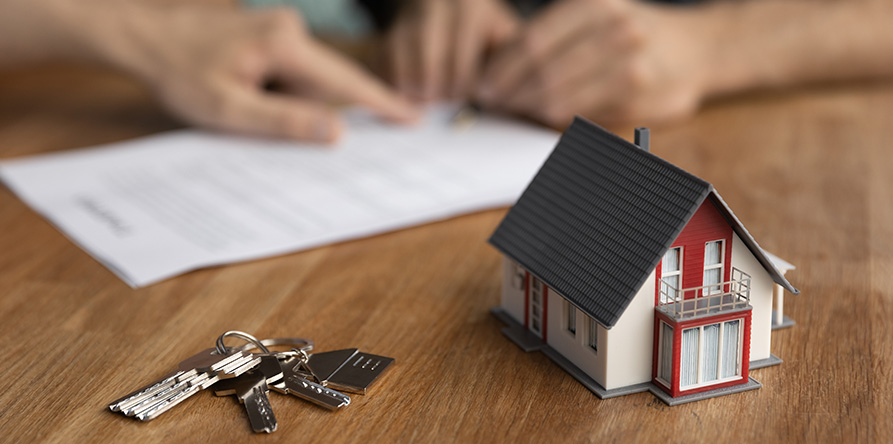
The FHSA advantage: Five things every first-time homebuyer needs to know
The FHSA advantage: Five things every first-time homebuyer needs to know
Owning a home is still the dream for many Canadians but making it a reality will require building up some savings. That’s where the First Home Savings Account (FHSA) comes in.
This registered investment account, which fuses the flexibility of a Tax-Free Savings Account (TFSA) with the tax benefits of a Registered Retirement Savings Plan (RRSP), is uniquely suited to help Canadians get into the housing market.
Given the account is relatively new – it was introduced in April 2023 – Canadians still have a lot of questions about how it works. We answer the five most-asked ones.
Should I use the FHSA or TFSA first to save for a home?
Most people will want to prioritize the FHSA, because it combines the best parts of an RRSP and a TFSA. As with an RRSP, every contribution you make to an FHSA is tax-deductible, meaning it lowers your taxable income in the year you invest (or in the future, if you carry the deduction forward). In the year you turn 18, you can contribute up to $8,000 per year to an FHSA, up to a lifetime maximum of $40,000, and withdrawals are tax-free, as with a TFSA, provided they are used for a qualifying home purchase. If a withdrawal is used for anything other than a qualifying home purchase, the funds will count as taxable income.
This doesn’t mean you should neglect your TFSA or RRSP, especially since both can also be used to help pay for a home. Because withdrawals from a TFSA are tax-free no matter how you plan to use the money, you could consider putting any savings from that account toward a down payment. With the RRSP-connected Home Buyers’ Plan (HBP), you can remove up to $60,000 tax-free from your RRSP account to put toward a first home. The only catch with the HPB is that you will have to pay it back in instalments over 15 years, or tax will be applied on the withdrawal. While you might start with the FHSA, if you’re eligible and financially able, you could consider using a combination of the FHSA, TFSA and RRSP to support your home savings strategy in a tax-efficient way.
If I don’t buy a home, do I lose my FHSA savings?
One of the most appealing aspects of an FHSA is its flexibility: if you don’t buy a home, any money you contributed to it can be transferred tax-free to an RRSP or a Registered Retirement Income Fund (RRIF) without the loss of contribution room. An FHSA stays open for 15 years, or until the account holder turns 71, giving you a low-risk period to explore your options. If you aren’t able to find your dream home within that time frame, at least the hard-earned money you put aside enjoyed tax-free growth while you were looking. Plus, you could always tap into the HBP for help to buy your first home, even if you are no longer eligible to hold an FHSA.
Can I use my FHSA to buy a pre-construction home?
Yes, provided you’re a first‑time homebuyer and the purchase meets the Canada Revenue Agency’s qualifying home rules. That means you’ll need a signed purchase‑or‑build contract before you pull funds from your FHSA, and that contract must state that you’ll legally take possession (or that the home will be substantially finished) no later than October 1 of the calendar year after the withdrawal. If these conditions aren’t met, the withdrawal will be considered taxable income.
You must withdraw the money either before closing or within 30 days of the title registering in your name and plan to move in within 12 months of getting the keys. After a qualifying withdrawal, every FHSA you own must be emptied or transferred and closed by December 31 of the next calendar year. Pre‑construction schedules are prone to delays, so be sure to build in a cushion, or wait until the builder’s timeline is firm before making a withdrawal.
What’s the best investment strategy for my FHSA?
When it comes to an FHSA, your investment decisions should align with your homebuying timeline and risk tolerance. If you plan to make a purchase relatively soon, you may consider focusing on lower-risk investments, such Fidelity All-in-One Conservative Income ETF (FCIP) or Fidelity All-in-One Fixed Income ETF (FFIX). These funds, or others like them, may help preserve your capital, maintain portfolio diversification and ensure you have the liquidity to act quickly if an opportunity arises. If your timeline is relatively longer, you could consider a more growth-oriented solution, because your money will have more time to compound and potentially recover from any decline. Growth-oriented ETFs, such as Fidelity All-in-One Growth ETF (FGRO), may be a good option, because they are a one-ticket yet diversified solution with higher equity allocation and the potential for higher returns, which can help with long-term growth.
Because you only have 15 years to save in an FHSA, it’s important to consider your time horizon for buying a first home and when the tax-advantaged account offers you the most benefits. If you open an account at age 18, do you think you’ll be in a position to buy a home by the time you turn 33? If you’re not sure, you could focus on your RRSP and TFSA instead. Just note: unlike an RRSP or TFSA, an FHSA only begins to accumulate contribution room once the account has been opened.
Can my parents help me max out my FHSA?
Yes, your parents can help you fund your FHSA, but the account must remain solely in your name, because contribution room can’t be shared. You simply deposit any contributions your parents give to you, and you – not they – make use of the tax deduction. Just remember, it’s your responsibility to stay within the contribution limits: $8,000 per calendar year and $40,000 over your lifetime. Any overcontribution will be met with a 1% monthly penalty until the excess funds are withdrawn.
To maximize the benefits of your FHSA, explore additional resources, or consult with a financial advisor for personalized guidance.


